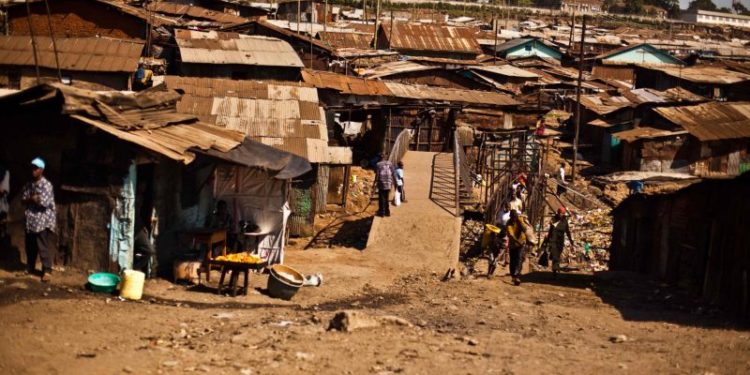Kenya’s latest poverty data paints a stark picture of widening economic hardship across the country, with rural households bearing the brunt of deteriorating living conditions. The 2022 Kenya Poverty Report, released recently by the Kenya National Bureau of Statistics (KNBS), reveals that nearly 40% of the population—around 20.2 million people—now live in poverty, as defined by minimal spending required to meet basic needs.
The report identifies three main poverty levels: food poverty, overall poverty, and hardcore (or extreme) poverty. Food poverty encompasses individuals who cannot afford essential food items, with those in rural areas considered food-poor if their monthly food spending per adult falls below KES 2,668, while in urban areas the threshold is slightly higher at KES 3,520. Nationally, food poverty affects 31.7% of Kenyans, equating to over 16 million people.
This challenge is more pronounced in rural Kenya, where 33.2% of residents fall below the food poverty line, compared to 28.6% in urban regions. The data reflects how rural households are forced to spend a larger share of their limited incomes on food, leaving little for other essential needs.
The situation becomes even starker when examining overall poverty. Defined by the total spending needed to cover both food and non-food essentials, overall poverty affects 39.8% of Kenyans. In rural areas, individuals fall below the poverty line if they spend less than KES 4,358 per month per adult equivalent, while the threshold in urban centers is KES 8,006.
Despite higher living costs in urban areas, poverty rates remain concentrated in rural Kenya, where 42.9% of residents are classified as poor, compared to 33.2% in urban areas. This rural-urban disparity highlights a significant gap in economic opportunities and access to resources.
Hardcore poverty, or extreme poverty, presents the most distressing picture of economic hardship. This category includes individuals whose spending per adult equivalent is below the food poverty threshold, meaning they struggle to afford even the bare minimum of essential goods. Nationally, 7.1% of Kenyans, or approximately 3.6 million people, fall into this category. The prevalence of extreme poverty is far higher in rural areas, where 9.3% of residents live in hardcore poverty compared to just 2.4% in urban areas.
These statistics emphasize the economic divide between urban and rural populations, with rural areas facing deeper levels of deprivation. Urban households generally benefit from higher incomes and greater access to diverse goods and services, despite facing higher living costs.
In contrast, rural communities are trapped in a cycle of low incomes, high dependency on basic food spending, and limited access to financial opportunities, resulting in a significantly higher concentration of poverty.
The findings of the 2022 Kenya Poverty Report signal an urgent call for both public and private sector action to bridge this growing economic gap. A large proportion of Kenya’s population clearly struggles with rising living costs and limited income growth, targeted policy measures that address food security, health, and infrastructure are essential to support the most vulnerable.
If no immediate remedies are implemented, the trend of deepening poverty in rural areas threatens to widen economic disparities even further, challenging our country’s long-term goals for inclusive growth and development.


















